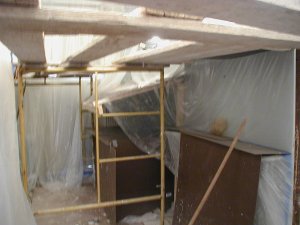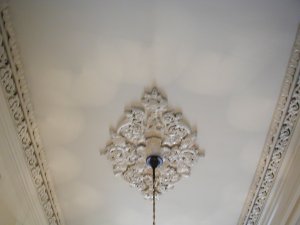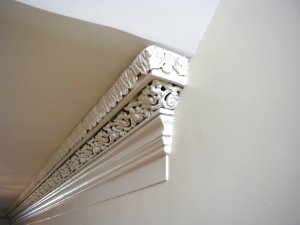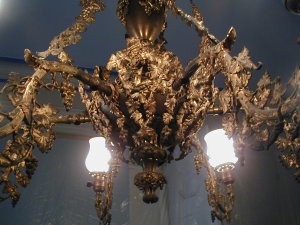
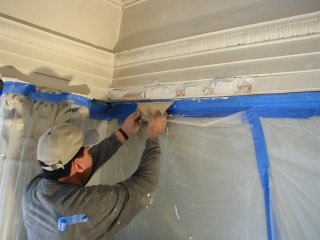
This method of forming the "arris", or outside
corner is called "stripping".
A wood strip is stuck flush with the old arris using dabs of molding plaster and lime. Later the blobs are scraped off. Nailing the strip would only damage the moldings more.
uses a mitering rod to straighten the angle, or
inside corner.
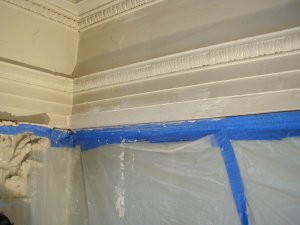
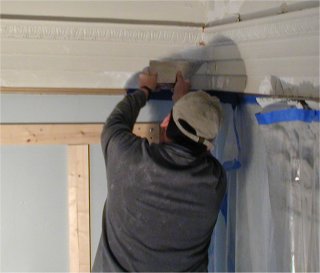
A little filling and troweling, and our arris is on the money, just like 1850.
with a mitering rod. With a new coat of paint,
moldings will look like new again.
Some of the castings are broken off and missing.
We'll probably do those next winter.

